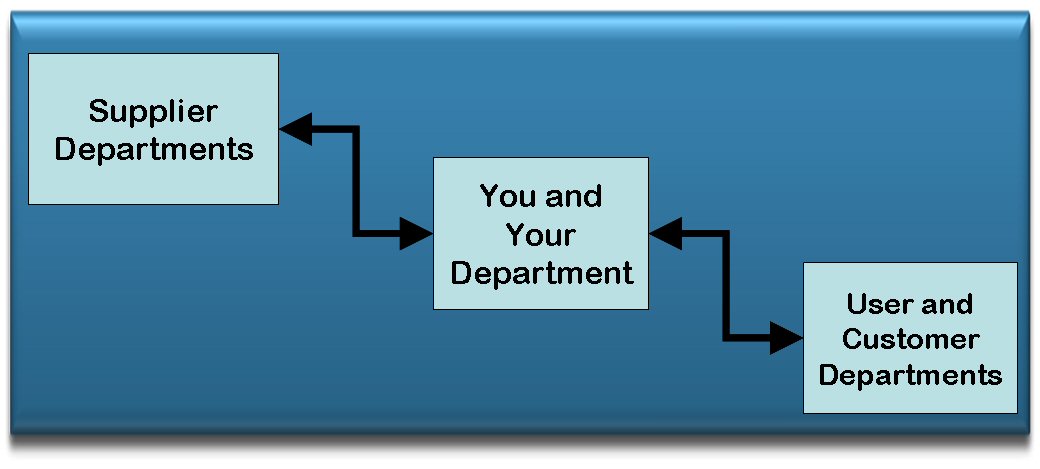Overview
Departmental Purpose Analysis (DPA) is a method enabling departments to:-
- Align their objectives with overall company mission
- Clarify Customer and Supplier Relationships
- Establish Measures of Performance
This is provided that the number of departments is reduced to a minimum and matched to the natural groups by prior input / output analysis and process analysis.
Features

Departmental Purpose Analysis (DPA) is a means of clearly identifying the purpose and total value added by departments. It is achieved by:-
- A task by task analysis to determine what is necessary to meet strategic needs (i.e. is the task necessary?)
- Identification of current utilisation of skills and capacity
- Recognizing that departmental processes have inputs, value added actions and outputs
- Recognising that departments have lead-times and reliabilities that need to be shortened and improved
- Assigning appropriate measures of performance to each department for total quality of performance - based on competitor practice analysis.
- Establish a discipline for looking at what we do or manage
- Viewing a departments as ‘businesses’ with inputs from suppliers and outputs to customers
This process allows managers to plan systematic improvements in interdepartmental quality.
Check that all outputs from the departments are necessary and that all necessary inputs are provided just-in-time.
The improvement process should be a cross-function / cross-departmental management led focus on the quality of work in every department across the company. It involves a systematic review of internal customer / supplier relationships and a consistent controlled management approach to answering three groups of questions.
Are We Doing the Right Things?
- What is the purpose of our department?
- Who are our customers and suppliers?
- What are our customer’s requirements?
- Where are we not fully meeting those requirements
- Why are we doing this activity?
- Why are we doing no-value added work?
Are We Doing Things Right?
- What is the priority issue?
- What are the root causes of our problems?
- Which is the best solution to the problem?
- Has the problem been eliminated to the satisfaction of the customer?
- Which is the next priority issue?
- What is world class performance?
Do We Continually Seek Improvement?
- When we have removed all major inhibitions to customer satisfaction how can we operate more effectively and efficiently?
- What are the priority opportunity areas for improving both effectiveness and efficiency?
Benefits
- In-depth knowledge of departmental activities, the value-added and time spent on them - the value chain for the business becomes visible
- Provides the department manager with a complete history of the inputs, the type of output to the customer and the workload required
- Provides a foundation specification for new managers / team leaders
- Gives management a working tool for defining non -conformance activities
- Permits the consolidation of recommended improvements at functional levels for optimisation
- Provides department staff with relevant and understood targets
- Supports continuous improvement practices